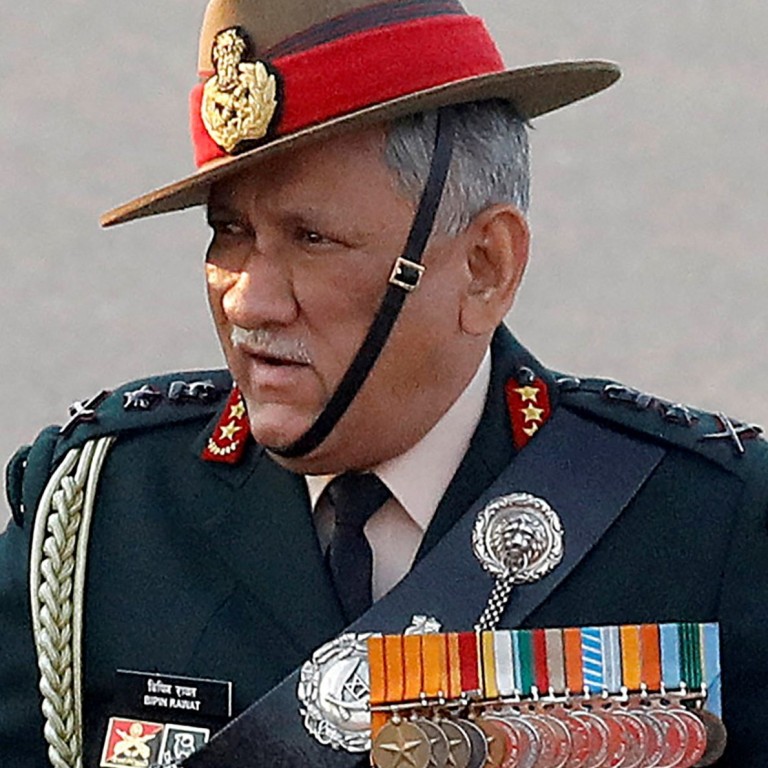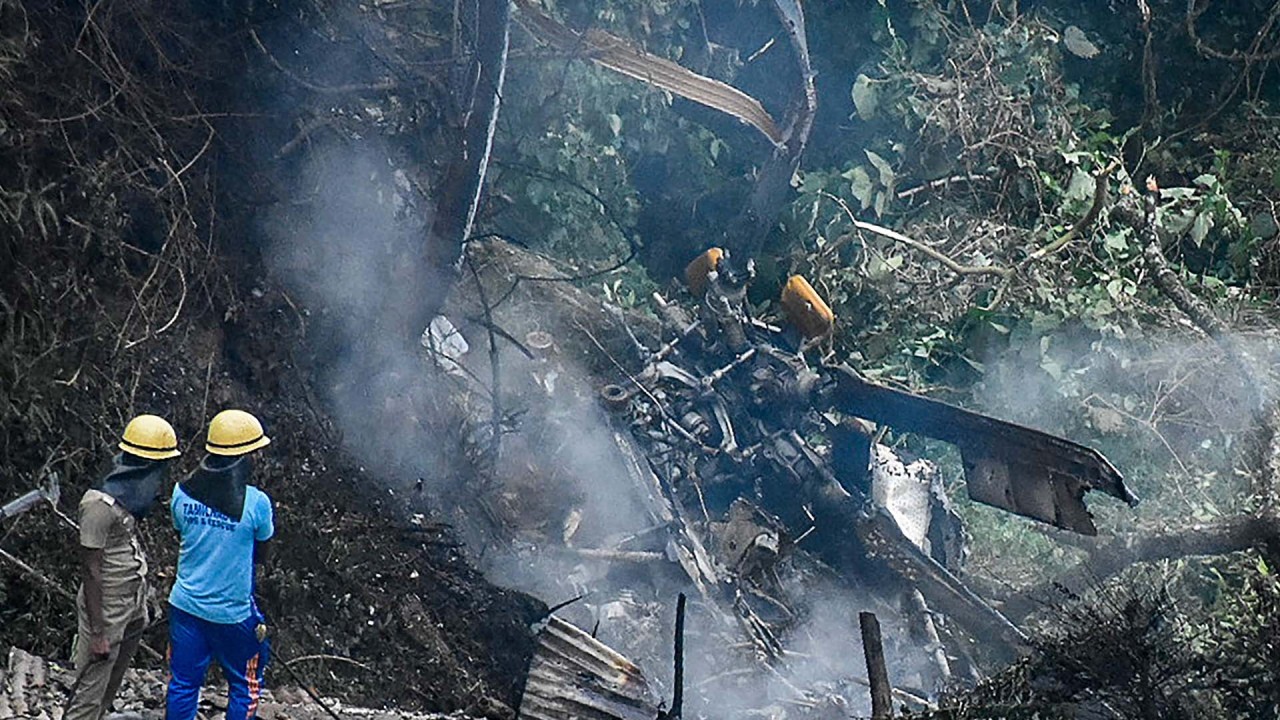
Pilot disoriented by bad weather led to crash that killed India’s defence chief Bipin Rawat
- The general was on a military helicopter with his wife and 12 others when a change in conditions forced them to fly into the clouds, a court of inquiry found
- His death was the subject of wall-to-wall coverage in local media, and his flag-wrapped coffin was towed through the streets of New Delhi
The helicopter was flying through a valley last month with General Bipin Rawat, his wife and 12 other army and air force personnel on board when a change in weather led the pilot to fly into clouds, the court of inquiry said.
“This led to spatial disorientation of the pilot resulting in controlled flight into terrain,” the court said.
The court ruled out mechanical failure, sabotage and negligence as the cause of the accident.
The Russian-made Mi-17V5 helicopter was on its way from an air force base to the army defence services college when it crashed near the town of Coonoor, a hill station in the southern Indian state of Tamil Nadu.
The helicopter lost contact with air traffic control seven minutes before it was supposed to land and it sent no distress call before it was found in flames in a forested area.
Rawat, 63, his wife and 11 others were killed on impact. The lone survivor, air force Captain Varun Singh, died later during treatment.
Rawat was the most senior official in the Indian military and the first chief of defence staff, a position created by the government in 2019. He was also an adviser to the Defence Ministry.
As India mourns its top general, what does his death mean for its military?
His primary task was to overhaul the military, which has struggled to modernise, and improve coordination among the army, navy and air force.
His death was the subject of wall-to-wall coverage in Indian media, and his flag-wrapped coffin was towed through the streets of New Delhi on a gun carriage draped with flower garlands before he was cremated.
He and his wife were cremated together on the same pyre, with a 17-gun salute fired as their daughters set it alight.
Additional reporting by Agence France-Presse


